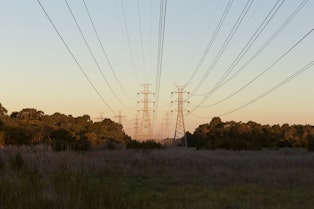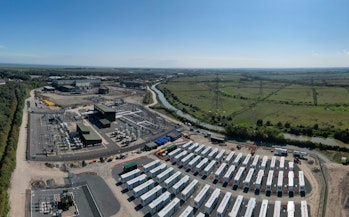
With the COP28 climate talks yielding an agreement on transitioning away from fossil fuels, 2024 looks set to be an interesting time for energy storage. But which markets will shine the most?
Here are five that we believe are almost certain not to disappoint.
China
China continues to consolidate its status as the world leader in energy storage, with a market surpassing $93.9 billion in 2022 and anticipated to grow at a compound annual growth rate of 18.9% in the next decade.
The Chinese government continues to focus on what it calls ‘new-type energy storage systems’, a category that includes various technologies, such as batteries, compressed air energy storage, flywheel systems and supercapacitors.
In March 2023, 19 of China’s 22 provinces released five-year plans for energy storage development, indicating continuing momentum. Projections suggest that by 2025 the installed capacity of new energy storage in China could reach more than 57 GW.
Notably, China not only leads the world in battery capacity and development but is also building out large amounts of thermal energy storage linked to concentrated solar power plants.
Market pros: The market is dominated by state-owned companies but anticipates partnerships with foreign multinationals as it seeks to expand its global footprint, says consultancy APCO Worldwide. However, the market remains generally off-limits to non-Chinese players.
Cons: Utilization rates for energy storage systems are low. Elevated electricity costs pose a challenge for the commercial viability of new energy storage systems, requiring subsidies to make them economically feasible.
United States
Around $92 billion has been invested in the US battery supply chain since President Biden took office in 2021, Energy Storage News reported in January 2023.
Much of this is thanks to the Biden administration’s 2022 Inflation Reduction Act, which substantially enhanced subsidies within the US energy storage sector.
In December 2023, industry association American Clean Power and analyst firm Wood Mackenzie revealed that the US energy storage market had installed 7.3 GWh of capacity in the third quarter of the year, marking a new quarterly installation record.
"Energy storage deployment is growing dramatically, proving that it will be essential to our future energy mix," said American Clean Power chief policy officer Frank Macchiarola.
“With another quarterly record, it's clear that energy storage is increasingly a leading technology of choice for enhancing reliability and American energy security. This industry will serve as the backbone of our modern grid."
The US Energy Information Administration expects the country’s grid-scale battery storage capacity to have doubled in 2023, said Deloitte, with further growth—from 18 GW to 32 GW—expected in 2024.
Additionally, electric vehicles accounted for 9% of new cars sold in the first three quarters of 2023 and the number of units on the road was likely hit the million milestone for the first time by year-end.
Pros: With hefty government backing, tax credit incentives for independent energy storage projects are stimulating greater-than-ever capital flows into the market.
Cons: In many places the grid is already struggling to cope with demand for clean energy projects. Grid constraints are an opportunity for energy storage, but average interconnection queue times of five years in 2022 are a problem for developers.

UK
The UK added 800 MWh of utility-scale energy storage capacity in 2022. And thanks to heightened demand and strong policy support, the UK energy storage market is well positioned to surpass expectations over the next three to five years.
It was only three years ago that UK electricity started to come predominantly from renewable energy, with 43% coming from a mix of wind, solar, bioenergy and hydroelectric sources.
In May 2023, the UK produced its trillionth kilowatt-hour of electricity from renewable sources, sufficient to power the nation’s homes for 12 years at average consumption levels.
While it took five decades to reach this milestone, current projections suggest that surpassing the next trillionth kilowatt-hour will only take another five years.
Pros: Moving forward, huge amounts of capital are set to be invested in utility-scale battery systems, with forecasted investments of up to $20 billion by the end of the decade.
Cons: As in the US, the UK grid is becoming increasingly constrained. The industry must work hard to avoid bottlenecks.

Australia
Australia has long punched above its weight in terms of energy storage capacity, and the current government is keen to extend the country’s clean energy credentials.
Australian treasurer Jim Chalmers has suggested that he will be looking to implement Australia’s own version of the US Inflation Reduction Act.
The federal government has already committed $40 billion to efforts aimed at achieving a national emissions reduction target of 43% by 2030, with an 82% share of renewables on the electricity grid.
Pros: Australia is increasingly hosting megaprojects such as the Western Green Energy Hub, which could manufacture more than 3.5 million tonnes of green hydrogen by 2030.
Cons: Some would argue that Australia’s biggest energy storage challenge is simply not having enough, although in practice there is probably a limit to how much more capacity can be satisfied with battery systems before longer-duration assets are needed.
Italy
The European utilities sector is undergoing a significant shift towards the generation and transmission of green energy.
A preliminary agreement reached in March 2023, amending the European Union's Renewable Energy Directive, emphasizes the need to expedite the green transition.
The updated directive has set a new target for 2030, aiming for renewables to constitute 42.5% of the Union's overall energy mix, surpassing the previous 32% goal established in the RePowerEU package, announced following Russia's invasion of Ukraine.
Greece, Spain, Germany and Italy are just four countries with ambitious growth targets that are expected to add significant energy storage capacity by 2030. But Italy is perhaps the most interesting of these given its vast need for storage and largely untapped potential.
Pros: The appetite for energy storage keeps on growing across the region and in March the European Commission approved a €103 million support package for projects.
Cons: Italy’s renewables procurement processes have proved ineffective in the past, with many renewable energy tenders going undersubscribed because of worries about permitting.
Publish date: 05 February, 2024